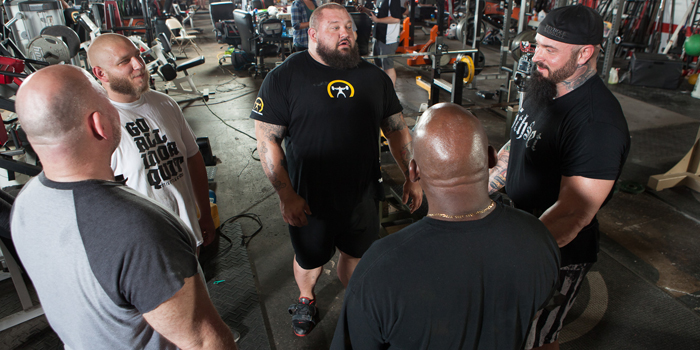
Critical thinking is one of the most important skills needed in the world today. Critical thinking is defined as “the objective analysis and evaluation of an issue in order to form a judgment.” In order to objectively analyze an issue, we must be sure to eliminate any biases that could potentially impact our thinking. Cognitive biases affect our decision-making every day. Most of the time, we are completely unaware of these biases. However, even when we are aware, it can be difficult to avoid them. They can affect the way we think and the decisions we make in our personal lives, work, and even in our training.
There are a few cognitive biases that I see very frequently when it comes to the fitness community.
Confirmation Bias
This is the most common bias I see, and I think we have all been guilty of this at one time or another. The confirmation bias states that we tend to only look for or listen to information that confirms our beliefs. These are the arguments you see on Facebook around politics, climate change, vaccinations, etc. People will cite articles and books that back up their own argument, but will completely ignore any information that contradicts what they believe.
Don’t get me wrong, actually putting in the effort to research and learn about the subjects you are interested in is great. However, it is important to make sure we look at all of the available information without our own beliefs impacting our final decision.
RELATED: Westside for Raw Lifters
I see this far too much in the fitness community. Do you want to spark a never-ending debate? Go on any social media site and post the question, “Does Westside work for raw lifters?” This will lead to a never-ending thread of people sharing links to this article and that study, and will somehow end up in someone threatening your life. Want to make it even worse? Post a question around the best nutritional approach.
The thing is, it’s okay to be passionate about something you truly believe in, like a training methodology or diet. And it’s great that you have read up on it and found out the reasoning behind the approach. But have you ever received new information that contradicts something you believed in wholeheartedly? It’s not easy to accept and it’s not easy to change our opinions based on this new information — nor should it be, because you also don’t want to be the person who flip-flops on their beliefs. But you should be open to new ideas and research, and willing to change your opinions even if it means admitting you may have been wrong.
Recency Bias
Now, I’m going to seem like I’m contradicting myself a bit here. I just said we need to be willing to accept new information that comes to light and not let our previous beliefs affect our decisions. However, when a new study comes out that claims to have found the latest and greatest approach to training, it does not mean you should abandon everything you currently are doing. The recency bias happens when we weigh the latest information available more heavily than the older data.
If a new study comes out today and shows that calf raises are the most important movement for your squat, it doesn’t mean you should stop everything else immediately. This is where the ability to weed out the bad information from the good is extremely important. This can only come with experience, but a few things to keep in mind when we are analyzing new information are the source, the person’s experience, your own experience, and the validity of the study, which can include things such as sample size. Sample size can have a big impact on the outcome of research studies. If the study was only done on three lifters who were completely new to training, I may not put much stock in the results. The source of the information should also have a big impact on your decision. If the article was written by Dave Tate and published on elitefts.com versus some guy in Men’s Health, I might actually start doing calf raises. Probably not, though.

The important thing to remember here is that, while we should always be open to new information, we should not blindly accept it for fact. Make sure the source of the information is valid, think about your own past experiences, compare and contrast what you previously believed with the new research, and make an informed decision.
I think this is why we often see old training philosophies making their way back to the mainstream fitness communities. People are quick to jump on the latest and greatest training trends, but eventually, realize there was nothing wrong with what they were already doing.
Availability Heuristic
An availability heuristic happens when we overestimate the importance or significance of the most immediate information that is available or that comes to mind. For example, someone might argue that smoking is not unhealthy because their grandfather smoked every day and lived to 100. This is an availability heuristic. I see a lot of this type of thinking in the fitness community.
Social media is great for the sport of powerlifting in a lot of ways. It has made some of the sport’s most elite athletes very accessible and has provided a platform for all of us to peer into their lives and look at the way they train. What it has also done is made every 17-year-old kid who has been lifting for three months think that 800-pound raw squats are normal. I can’t tell you how many times I have seen an elite level lifter complete an amazing lift only to look in the comments and see, “Yeah, but so and so squatted more.” That’s great. But it should not take away from the accomplishments other lifters are making every day.
As much as people like to refer to the “glory days” of powerlifting, we are currently at the height of the sport’s popularity. There are far more lifters competing today than five years ago, and with this comes a larger talent pool. Lifters are breaking world records left and right, and if you only looked at social media for your powerlifting information you would think everyone totals over 2000 pounds. But go to a meet and you will see that the overwhelming majority of lifters are not hitting these numbers. They are busting their asses week in and week out to get there, though. This can be very frustrating, especially for a newer lifter. It is important to remember that social media can be somewhat of a fantasyland and people will typically only post the good things. What about all the lifts they have missed? What about all the years they have put in to get there? What about the hundreds of thousands of lifters who are not at that level and not posting videos?
The next time you log on to Instagram and see all your favorite lifters hitting numbers you can only dream of right now, just remember, these guys are the top one percent. They have put years and years into training to be where they are (most of the time), and just because you’ve seen someone lift that much weight before doesn’t mean it’s normal.
I hope moving forward you can avoid some of the biases when it comes to decision-making, not only in your training but in your everyday lives as well. There are plenty more biases that affect our decision making, and I would encourage you to learn more about them. As G.I. Joe used to say, “Now you know, and knowing is half the battle.” Just being aware of our biases is not enough to avoid them; you have to actively work towards eliminating biases and becoming a critical thinker.
Daniel works as a systems analyst for a large financial institution. He has a Bachelor’s degree in information systems management and is currently working towards obtaining his MBA. He competes in powerlifting, with best lifts of a 620-pound squat, 410-pound bench, and a 570-pound deadlift, raw at 220.









